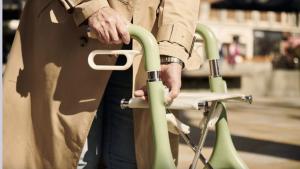
Twenty one-year old Asad J. Malik is an augmented reality designer with a strong interest in Artificial Intelligence (AI) and nanotechnology. The Pakistani technologist previously designed an incredibly popular Harry Potter HoloLens experience. His latest project, however, Holograms from Syria, takes a decidedly more political approach and brings the realities of war in Syria to the USA.
Born just 5 minutes away from the exact location where Osama bin Laden was killed in Abbottabad, Pakistan, Malik - who goes by the alias 1RIC - has long been working with technology to develop projects that enable the political voices of young people. One of his earliest was a campaign against cyber censorship in Pakistan that pushed the government to unblock YouTube after a 3-year ban.
Holograms from Syria, however, focus on a different kind of political message. Malik was intrigued by how, despite US involvement in numerous global conflicts, their citizens had become largely desensitised to it. While he felt the impact of the post 9/11 war on terror every day growing up in Pakistan, Americans were heavily insulated from it.

"It's an interesting dynamic that people living in this country are economically so directly involved in the war, but their experience of it has been reduced down to images of a handheld display," Malik told Creators.
Using the Microsoft HoloLens – the world’s first self-contained, holographic computer – Malik’s project alters the viewer's surroundings by bringing distressing, holographic images of war into that individual’s space. Because the atrocities of war exist mainly on the Facebook newsfeeds of most Americans, Holograms from Syria makes the horror of war tangible.
Many of the images in the project are those that have appeared in the media, including the image of 3-year-old Alan Kurdi’s dead body washed up on a Turkish beach that caused an upturn in international concern over the refugee crisis. Unlike traditional photos, these holographic images are designed to interact with the viewer’s surroundings.

For Malik, Holograms from Syria is not intended to encourage guilt in American viewers; rather its aim is to drive home the notion that much of their social, political, and economic security is inextricably linked to another human being’s dead body.
For more information about the project and the artist’s mission, visit his website.






